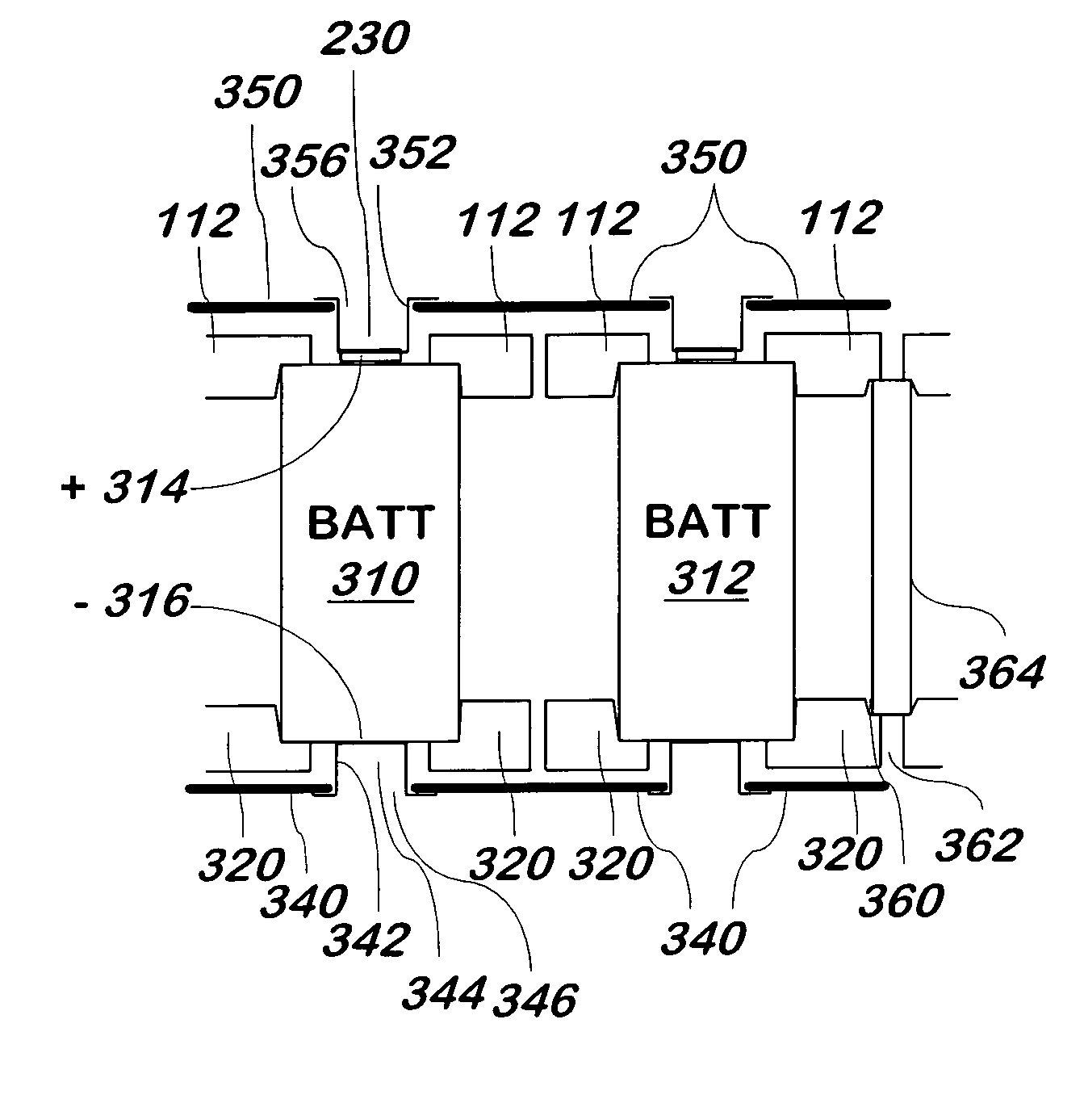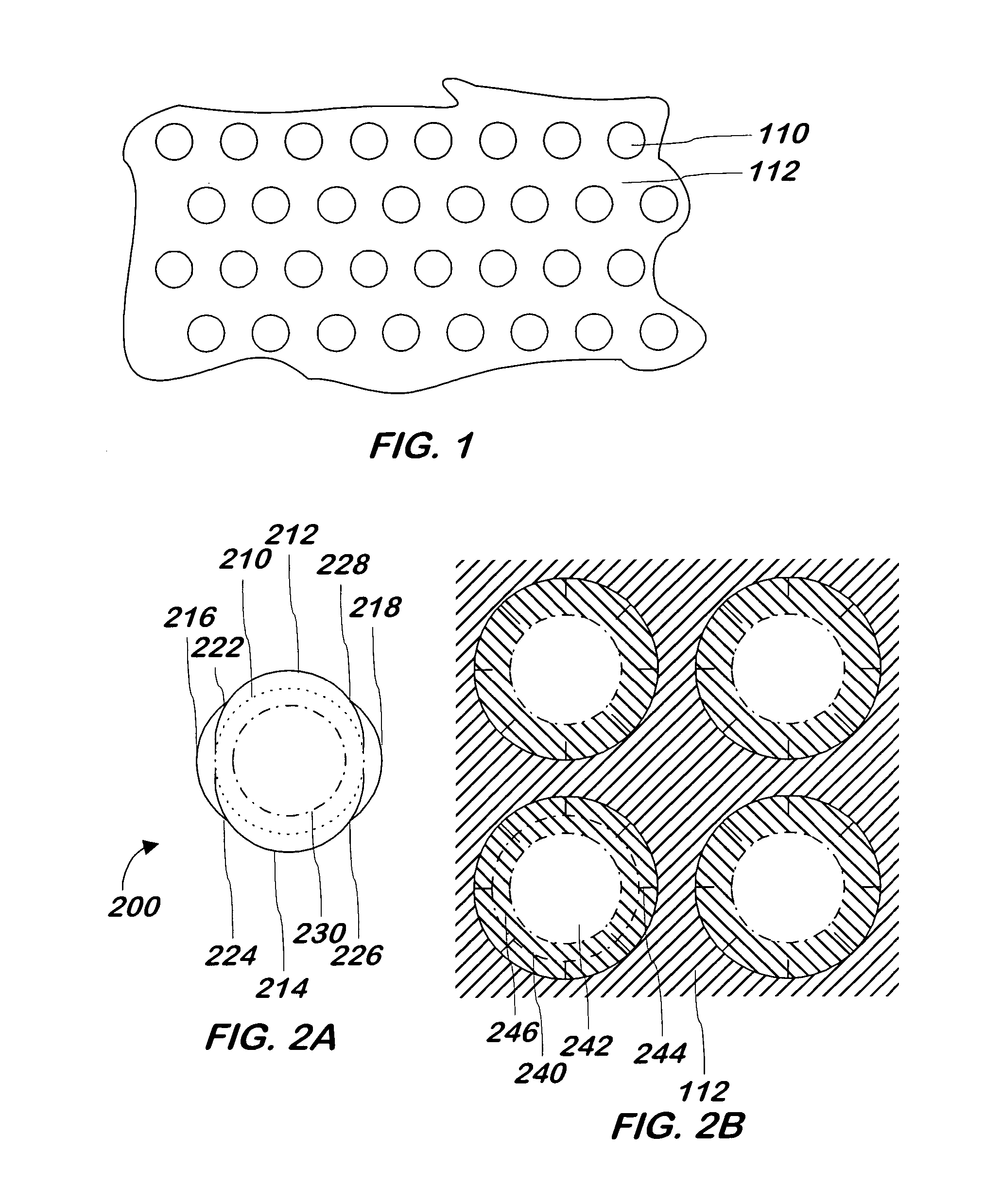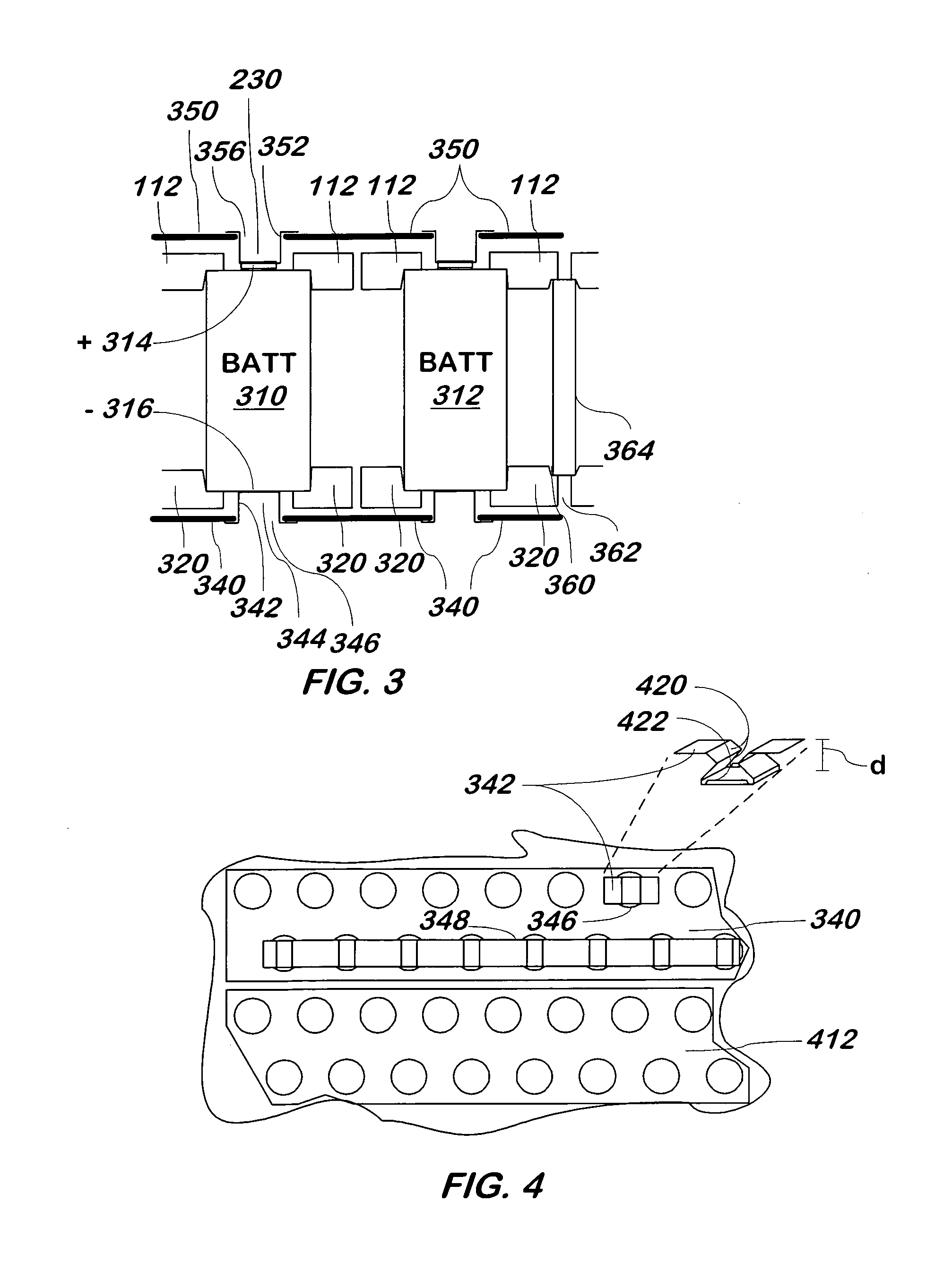Method and apparatus for mounting, cooling, connecting and protecting batteries
a technology for connecting and protecting batteries, which is applied in the field of battery systems, can solve the problems of increasing the heat retention of batteries, reducing the life of batteries, and cumbersome and bulky assembling of batteries in plastic housings, so as to maximize the use of available space, save space, and less likely to be crushed
- Summary
- Abstract
- Description
- Claims
- Application Information
AI Technical Summary
Benefits of technology
Problems solved by technology
Method used
Image
Examples
Embodiment Construction
[0041] Referring now to FIG. 1, a substrate used to hold one or more sets of one or more batteries is shown according to one embodiment of the present invention. The batteries used in one embodiment are any conventional rechargeable batteries having an 18650 form factor, but other types of batteries and other form factors may be used.
[0042] The substrate 112 may be made of a material that electrically insulates one face of the substrate from the other face. The substrate 112 has at least two faces and may or may not be substantially flat. In one embodiment, the substrate 112 has two primary faces, both of which are made of an electrically insulating material. In one embodiment, the substrate is a single layer of such insulating material, such as fiberglass or plastic, and in another embodiment, one or more layers of a conducting material are formed in the substrate in the manner of a conventional printed circuit board to allow wiring for sensors to be run along as part of the subst...
PUM
| Property | Measurement | Unit |
|---|---|---|
| Force | aaaaa | aaaaa |
| Flow rate | aaaaa | aaaaa |
| Polarity | aaaaa | aaaaa |
Abstract
Description
Claims
Application Information
 Login to View More
Login to View More - R&D
- Intellectual Property
- Life Sciences
- Materials
- Tech Scout
- Unparalleled Data Quality
- Higher Quality Content
- 60% Fewer Hallucinations
Browse by: Latest US Patents, China's latest patents, Technical Efficacy Thesaurus, Application Domain, Technology Topic, Popular Technical Reports.
© 2025 PatSnap. All rights reserved.Legal|Privacy policy|Modern Slavery Act Transparency Statement|Sitemap|About US| Contact US: help@patsnap.com



